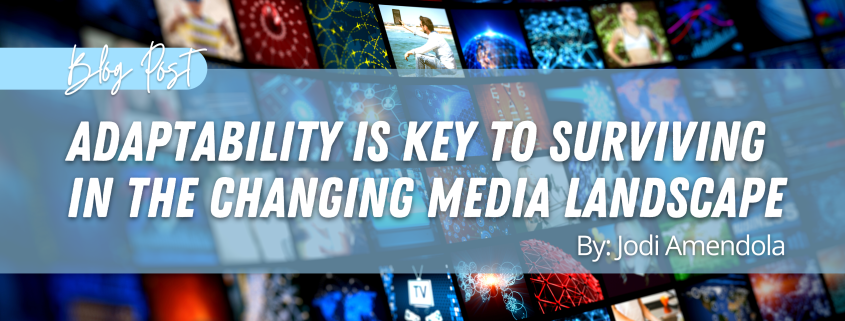Blink and the media landscape changes: a magazine goes out of business, one company acquires another, a podcast launches.
Blink again and something else has changed.
In the nearly 20 years since I founded Amendola Communications, the media landscape for healthcare and healthcare technology has changed dramatically. Publications that I assumed would last forever are long gone while others have sprouted in their place. The dominant medium has shifted from print to digital and the lead time for news has shrunk from days and weeks to, well, almost nothing.
The number of journalists covering healthcare is also greatly reduced. The big publications once had mastheads with multiple editors and reporters; now, most have only a few and they’re juggling podcasting and social media duties along with reporting and writing.
I hate to see any media outlet vanish. That’s partly for selfish reasons; fewer outlets means fewer places we can pitch. But it’s also because I love journalism and I love helping clients get their news out.
But nostalgia is an indulgence, not a business model.
That’s why, amidst all the change, Amendola Communications remains focused on the constants: the need for companies to spread the word about their products and services and the interest in them among the industry. While there might be fewer media outlets now, there is more healthcare news and content than ever before and it’s just as important to get it seen.
So we’ve adapted our approach. Rather than primarily pitching media interviews, we now do a lot more content development where we conceive a story idea, pitch it to a media outlet, and then have one of our writers create a draft that is vendor-neutral and publishable.
Another example of adaptability is how we’ve had to change our approach to media interviews at key trade shows, such as HIMSS, HLTH and others. Instead of only relying on in-person interviews at the shows, we have been super-aggressive in securing more podcast and video interview opportunities for our clients as well as focusing on pre-and-post show news coverage.
We also now operate in a world where clients are less dependent on third-party outlets. Companies have acquired the ability to speak directly to customers through their own blogs, emails, websites, social media, webinars, podcasts and, in some cases, publications. Indeed, consumers now expect a more direct link with and greater insight into the companies they work with and those businesses can no longer depend on third-party media to provide that.
This good news is that this allows businesses to be more creative, comprehensive and in control of how their images are presented and how their stories are told. A big part of what we do now at Amendola is creating content for our customers and advising them on the best format for that information.
In an ever-changing environment, the greatest necessity for ourselves and our clients is adaptability in how we craft and deliver our messages.
